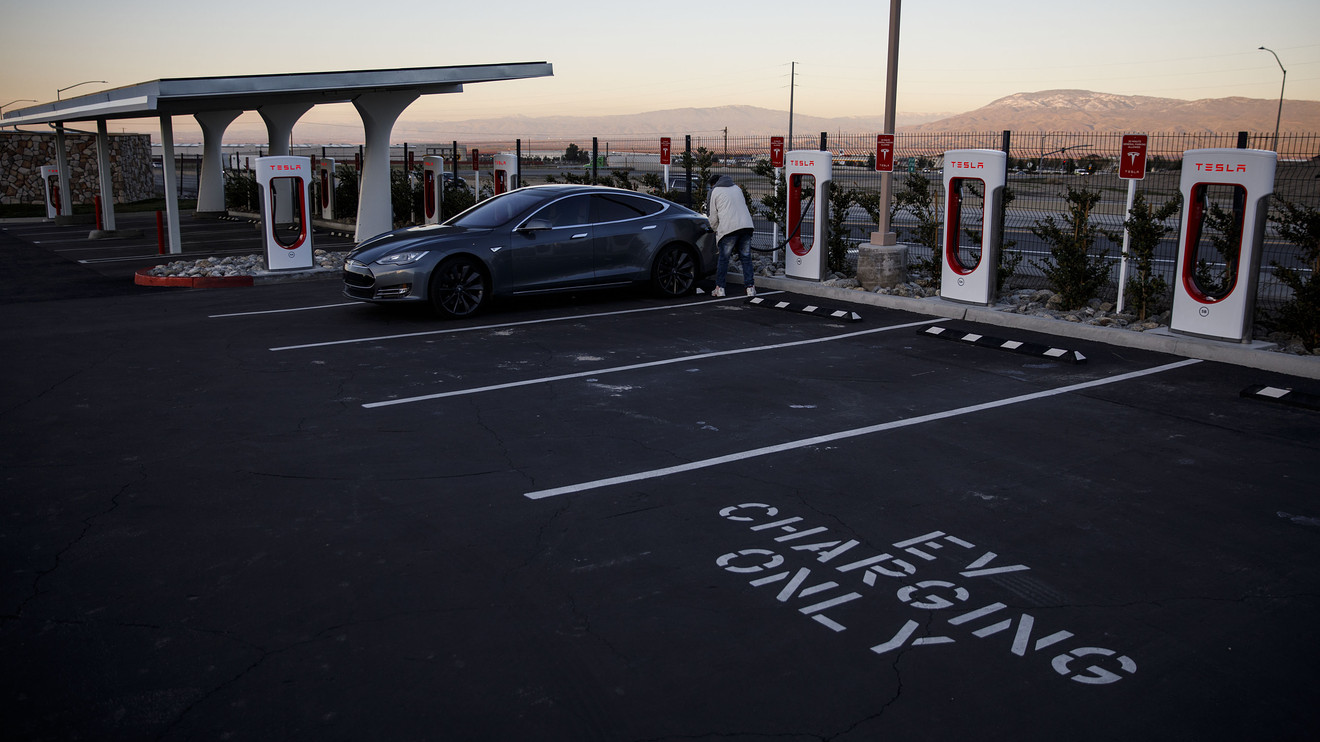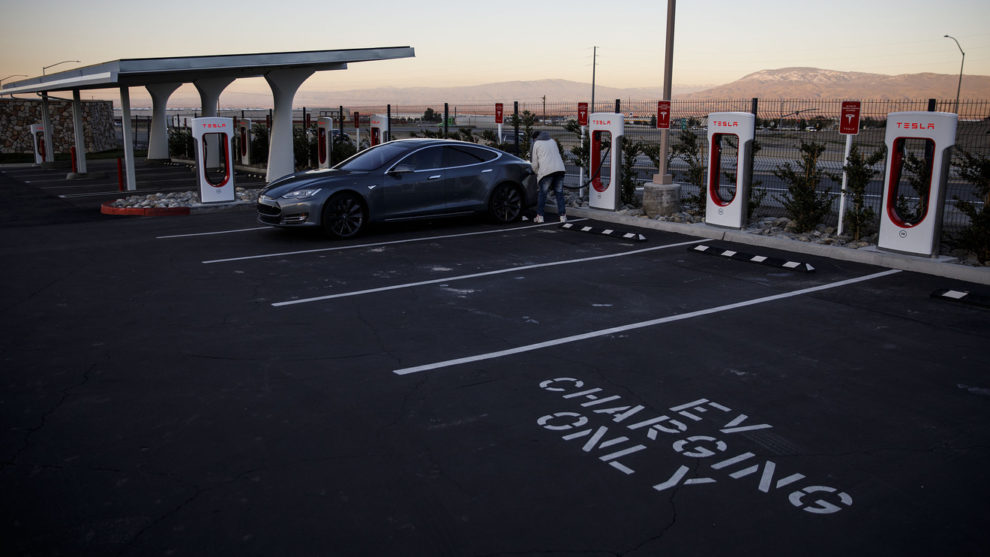
Are electric vehicles good for the environment? I am slightly disturbed by how this topic has been politicized. I am not going to debate global warming here, but let’s at least agree that an excess of carbon dioxide (CO2) is unhealthy for you, me, and the environment.
Roughly two-thirds of the electricity generated in the U.S. is currently sourced from fossil fuels. The positive news is that only half of that comes from coal; the other half comes from natural gas, which produces half as much CO2 as coal (though it has its own side effects — it leaks methane). Another 20% of U.S. energy comes from nuclear power, which produces zero carbon emissions. The remaining 17% comes from “green” sources, such as hydro (7%), wind (6.6%), and solar (1.7%).
So if tomorrow everyone in the U.S. switched to an electric vehicle (EV), and our electrical grid was able to handle it, we’d instantly cut the nation’s CO2 emissions by more than one-third.
The reason I am a big fan of the electric vehicle is that it offers consumers choices. Gasoline-powered cars run on oil — that’s it; electric cars open the door to multiple forms of alternative energy. Such flexibility and choice means oil could cease to be the commodity that dictates geopolitics.
Alternatives to fossil fuel have much less impact on the environment — and on you and me. Nuclear energy, for starters, is a no-brainer. Nuclear power plants have little environmental footprint — they spit out steam. But we have witnessed Chernobyl, Three Mile Island, and Fukushima. It is unclear how many people died in those disasters, because the death toll estimates range from a few dozen who died from direct exposure to thousands who died from cancer caused by radiation.
Yet if clearer minds had prevailed, we would not be on the fourth generation of nuclear reactors but the four-hundredth. Nuclear should be our core energy source: It is cheap; it produces little CO2; it provides stable, predictable output; and the latest versions are safe (self-cooling if there is loss of power).
Yet what I have learned in investing is that what I think should happen doesn’t matter; only what will happen matters. Here is the good news: Nuclear production is expected to increase by almost 50% over the next 20 years, and 90% of the increase will come from the two most populous nations — China and India.
Solar power is another option. Ten or 15 years ago, the thinking was that the solution to our energy problems would be lower prices for solar power. Indeed, the cost of solar has declined by 50% to 80% over the past decade, and this trend will likely continue. The problem is that we expect heat and air-conditioning to be available instantly, even on cloudy days. On those days, solar output drops, and if the wind doesn’t blow, wind turbines don’t turn. Then “peak” coal- or gas-fed power plants come online to fill in the gap. Peak plants are smaller, usually less efficient power plants that produce more CO2 per kilowatt hour than larger plants.
Instead of peak plants, we need peak batteries on sunny days to store extra electricity in battery packs. Interestingly, Tesla TSLA, +1.73% provided a 100-megawatt battery system to the state of South Australia for $66 million to help the region deal with a massive blackout in February 2017. It is unclear if Tesla made money on this transaction. However, it was reported that the battery saved the Australian state $17 million over six months by allowing it to sell extra power to the grid.
Recently, Tesla announced the Megapack (a battery pack that looks like a shipping container), a large, utility-grade solution that has 60% greater power density than the battery used in South Australia. Thus, the billions of dollars poured into battery technology for EVs are also lowering the cost of peak batteries.
But here’s the inconvenient truth about batteries and renewables in general: they are made of earthly materials that have to be mined, transported, refined, and turned into finished products, which are often nongreen alternatives.
There’s another concern specific to lithium-ion batteries. They require cobalt, a mineral found in the Earth’s crust. About half to 70% (depending on the source) of the world’s cobalt reserves are in the Democratic Republic of the Congo, a politically unstable country with questionable labor practices. Both Tesla and Panasonic PCRFY, -0.84% 6752, -0.15% have been reducing the amount of cobalt used in their batteries; it has declined by 60% — the Tesla Model 3 battery, for example, contains just 2.8% cobalt. (By comparison, the Volkswagen ID.3’s battery VW, -0.21% contains 12% to 14% cobalt.) Tesla and Panasonic recently announced that they are working on a cobalt-free battery; substituting silicon for cobalt.
I now understand why Jeff Bezos believes in mining asteroids for minerals and is committed to spending his Amazon.com wealth on Blue Origin, his aerospace venture. And I see why Elon Musk wants his SpaceX to relocate earthlings to Mars. No matter what path we take in generating electricity, humans will still produce plenty of carbon dioxide in the process.
Oil is unwell
Nowadays 70% of oil production is used for transportation: the world produces about 80 million barrels a day globally, and about 60 million barrels go to cars, trucks, and airplanes. The rest goes for plastics, heating, and other uses. As EVs take market share from internal-combustion engine cars, demand for oil will decline.
Oil production requires a significant up-front investment, and so oil companies have a strong incentive to pump as much oil as they can for as long as they can, as long as their marginal extraction cost is below the price of oil. But supply exceeding demand will eventually lead to a collapse in oil prices.
Low oil prices will lead to bankruptcies, which in turn will lead to decreases in the supply of oil. Oil prices will face further declines as EVs continue to take market share. (At some point, national governments will put phase-out deadlines on gasoline-powered vehicles, which will accelerate EV adoption.) Oil prices will decline again, and the vicious cycle will continue.
Read more about how EVs will disrupt the auto industry, including whether Tesla and traditional automakers will survive in the long run, and who’s right in the Tesla bull vs. bear debate.
Vitaliy Katsenelson is chief investment officer at Investment Management Associates in Denver, which has no positions in any of the companies mentioned. He is the author of “Active Value Investing” (Wiley) and “The Little Book of Sideways Markets” (Wiley).
How does one invest in this overvalued market? Our strategy is spelled out in this fairly lengthy article.
Plus: This could be the next gold mine for Tesla and other electric vehicles
More: 7 tips for buying your first electric vehicle





